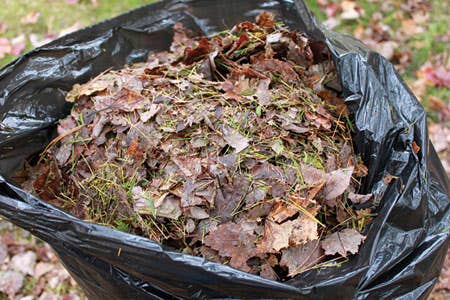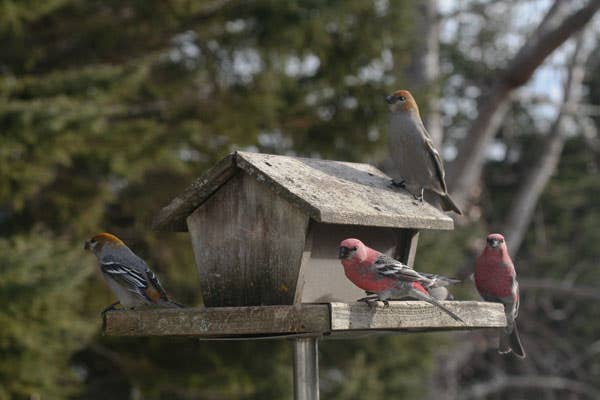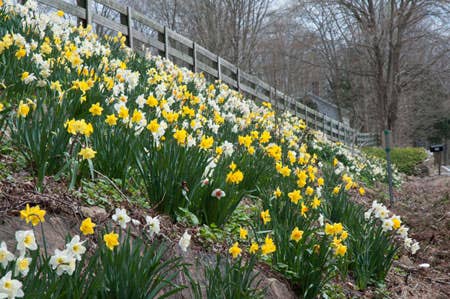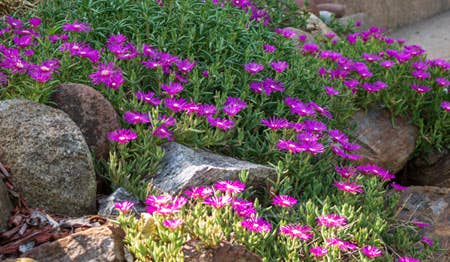Q&A with Bob Polomski 25
Extension Consumer Horticulturist, Clemson University I would like to add some spring-blooming bulbs to my lawn this fall. What kinds will naturalize well? T.R., Nashville, TN Answer: The best spring-flowering…
Extension Consumer Horticulturist, Clemson University
I would like to add some spring-blooming bulbs to my lawn this fall. What kinds will naturalize well? T.R., Nashville, TN
Answer: The best spring-flowering bulbs for lawns are those with grasslike foliage, since they will blend in with the grass once the flowers have faded. This foliage must be left intact until it yellows in order for the bulbs to regain enough energy to bloom the following year.
Crocuses are fine candidates. Dutch crocus (C. vernus) comes in colors from white to puple. A good yellow is C. ancyrensis ‘Golden Bunch’, while C. tommasinianus and C. minimus provide a lilac blue.
Becky Heath, of Brent and Becky's Bulbs in Gloucester, Virginia (www.brentand beckysbulbs.com), suggests a number of other possibilities, including dwarf irises, notably the blue and gold Iris reticulata ‘Joyce’, blue ‘Harmony’, yellow Iris danfordiae, and the plum-colored hybrid ‘George’.
Glory-of-the-snow (Chionodoxa spp.), grape hyacinths (Muscari spp.)—especially ‘Christmas Pearl’, which is one of the earliest-blooming cultivars—are further possibilities. Finally, consider planting spring starflower (Ipheion uniflorum), Siberian squill (Scilla siberica), and snowdrops (Galanthus spp.).
Any lawn to be planted with bulbs should receive full sun. For the best effect, bulbs should be planted in natural-appearing drifts. Use a narrow-bladed trowel to tuck the bulbs into the lawn. Fifteen of these small bulbs per square foot is not excessive.
Allow at least eight weeks after bloom before mowing the lawn. If the lawn simply must be mowed sooner, adjust the mower to its highest setting, to avoid removing too much of the bulb foliage. You must also be careful not to apply any herbicide to the lawn that might injure the bulbs.
I have been told that gypsum will improve my clay soil. How much of it should I add? T.R., Burke, VA
Answer: Gypsum, or hydrated calcium sulfate, has been used as a soil amendment for over 200 years. It adds calcium to the soil without increasing the pH, as would happen with ground limestone (calcium carbonate). Its principal use, however, is to restore the tilth and physical structure of sodic soils. These are soils that either naturally contain a high level of sodium, as in arid parts of the country, or that have been made sodic through irrigation or the application of large quantities of road salt. An excessive accumulation of sodium causes the soil particles to deflocculate or disperse. These individual soil particles become tightly arranged and restrict pore space. As a result, sodic soils are poorly drained and, when wet, become slick and sticky. When they dry out, they become rock hard. Also, high levels of sodium preclude the uptake of other nutrients such as calcium and magnesium; in extreme cases, sodium levels can also be toxic to the plants.
The calcium that gypsum adds to the soil replaces the sodium, which leaches out as sodium sulfate. As a result, the individual soil particles start to flocculate to form larger particles. Organic matter stabilizes these aggregates to produce pores that improve root growth and facilitate air and water movement.
The acidic, fine-textured, compacted clay soils in your region may appear to have the same properties of sodic soils, especially if you have made the mistake of working them when they were wet. However, adding gypsum to clay will not substantially improve its workability.
What you should be adding to your clay, instead, is organic matter such as compost, leaf mold, or rotted manure. A soil test will determine whether you need to adjust your pH (or apply gypsum for its calcium). Although it's not as easy to apply, adding organic matter is by far the best way to improve the growing environment both for your plants and for the soil fauna, which, in the long run, will contribute to the development of a highly productive soil.
My ‘Margarita’ sweet potato grew luxuriously this summer. Can I overwinter it? If so, how? G.J., Dayton, OH
Answer: ‘Margarita’, ‘Blackie’, and ‘Tricolor’ are all ornamental varieties of the common sweet potato (Ipomoea batatas), a staple of subtropical and tropical cuisine.
‘Margarita’ is a chartreuse-leaved sweet potato released by Allan Armitage at the University of Georgia in 1996. He received the plant from Hunter Stubbs, who discovered it in his garden in Raleigh, North Carolina.
The cultivar was selected for its colorful foliage, but it does produce underground tubers. Just before or just after frost has blackened the foliage, you can dig these up, being careful not to scratch or bruise them. Allow the sweet potatoes to dry for two to three hours, then cure for a week to 10 days at temperatures between 80 and 90°F and high humidity. This will heal wounds and bruises and allow a corky layer to form. Once the tubers have cured, wrap them in newspaper to retard moisture loss, and store them in a cool location, preferably between 55 and 60°F.
In the spring, start new plants by placing one end of each sweet potato in a jar of water. Fill the jar so that the top half of the tuber is above the waterline. Place it in a sunny window. In a few days roots will emerge from below the waterline. Two or three weeks later, leafy shoots will grow from the top. When the shoots have at least two nodes or three or four leaves, break them off from their attachment on the tuber and insert them in a soiless mix, making sure that a node is below the surface of the medium. In two or three weeks the cuttings will have rooted. These can be hardened off and used for plants, once the soil temperature outdoors has reached 65°F.
Every fall I purchase pots of blooming mums to add to my fall garden. They are supposed to be hardy, but many fail to survive the winter. What should I do? D.B., Shrewsbury, MA
Answer: The difficulty you are experiencing with overwintering these plants comes in good measure from the fact that they have spent the summer growing in containers and thus have a compact root ball. While the plants can be transplanted into the soil without setback, there is not enough time for the roots to spread out into the surrounding soil. As a result, winter freezing, heaving, and drying frequently lead to the plant's death. If you obtained individual rooted cuttings in the spring, the way the nurseries do, and raised these in the ground all summer, the plants would have a much better chance of survival.
The mums you have purchased are likely in the Prophet Series from Yoder Brothers, the world's largest producer of rooted chrysanthemum cuttings. Many of these have proven to be winter hardy in Zone 5 if planted directly in the garden.
Your best chance with a potted hardy mum purchased in the fall is to plant it in the ground, mulch and water it well, and cut it back to three inches after the blooms are spent. After the ground freezes, apply a covering of conifer branches.
Next year you may wish to add some chrysanthemums to your garden in the spring. Many of the newer varieties, such as the My Favorite Mum series, are self-branching and need no pinching. But old-timers such as ‘Sheffield’, a late-blooming, apricot-pink chrysanthemum, should be included as well. As for those fall-purchased plants, you can use them for seasonal spots of color and consider them annuals.
When I was in Florida, I discovered an unusual tree called a Chinese date tree. Will it thrive in my area? —D.R., Austin, TX
Answer: Jujube, or Chinese date (Ziziphus zizyphus, commonly listed as Ziziphus jujuba), has been cultivated in China for more than 4,000 years. This deciduous tree is hardy in USDA Zones 6 to 10, though it fares best in the warmer part of this range. Jujubes are relatively low-maintenance, drought-tolerant trees that prefer a well-drained location in full sun or partial shade. Jujubes can become large shrubs or small trees, reaching a height of 15 to 35 feet with a spread of 10 to 30 feet. The shiny green leaves turn yellow in the fall. Zigzagging branches eventually give the tree a spreading, irregular crown. Many cultivated varieties are thornless, though suckers arising from the roots often bear menacing spines. Unless these suckers are removed, they can result in a nearly impenetrable thicket.
In the spring and sporadically thereafter, fragrant, inconspicuous, yellow-green flowers emerge along small branch-lets, which can be mistaken for compound leaves. These flowers are self-fertile in many varieties; however, yield is sometimes improved by pollination from another variety. The oval green fruits that follow range in size from a cherry to a small plum. Green at first, they eventually turn whitish and develop mahogany blotches, which indicate ripening. By late summer or early fall, the fruits turn completely dark red and become wrinkled. At this stage they can be harvested by vigorously shaking the tree. Even when picked at the whitish stage, however, they will continue to ripen normally.
The flavor and texture of fresh jujubes is akin to a sweet, somewhat mealy apple. High in vitamin C but low in acidity, the fruits can be stored in the refrigerator for two to three months, or dried to resemble dates with a sugar content of 70 to 80 percent.
More than 400 cultivars of jujubes are cultivated in China. In this country ‘Li’ and ‘Lang’ are commonly available. H







